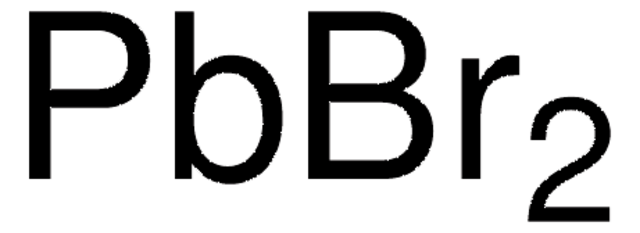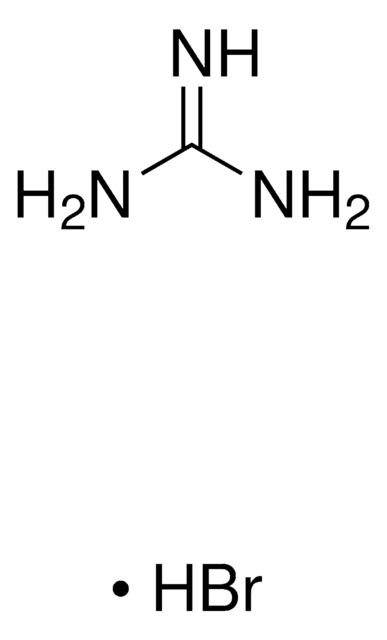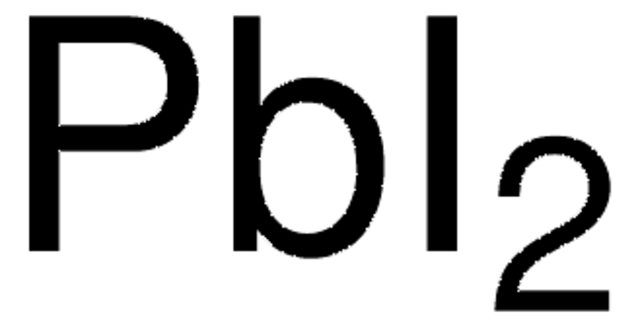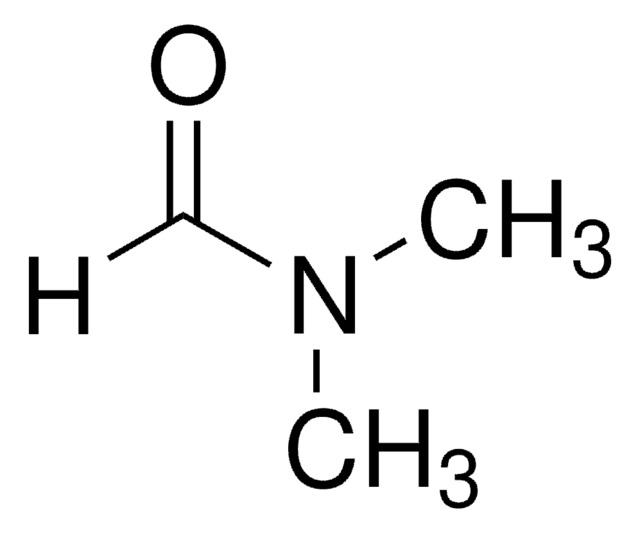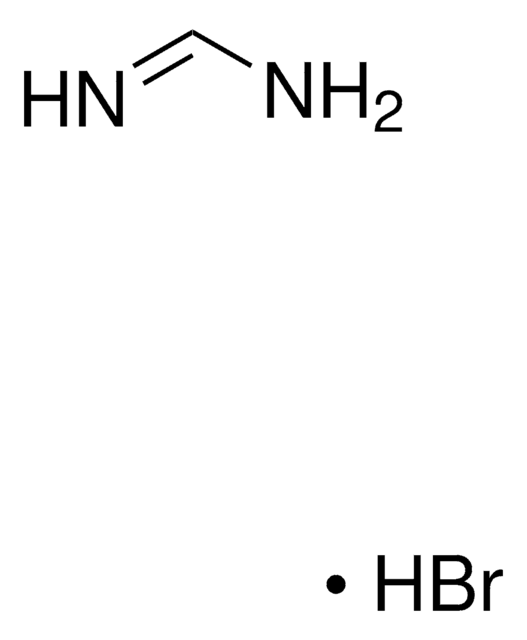202142
Cesium bromide
99.9% trace metals basis
Synonym(s):
Cesium monobromide
About This Item
Recommended Products
Quality Level
assay
99.9% trace metals basis
form
crystalline
impurities
≤1500.0 ppm Trace Metal Analysis
mp
636 °C (lit.)
density
4.44 g/mL at 25 °C (lit.)
SMILES string
[Br-].[Cs+]
InChI
1S/BrH.Cs/h1H;/q;+1/p-1
InChI key
LYQFWZFBNBDLEO-UHFFFAOYSA-M
Looking for similar products? Visit Product Comparison Guide
Related Categories
Application
- As a precursor to synthesize cesium lead bromide nanoparticles by the ultrasonic bath method.
- To fabricate inorganic perovskite material such as (CsPbBr3), for solar cells.
signalword
Warning
hcodes
Hazard Classifications
Acute Tox. 4 Oral - Aquatic Acute 1 - Repr. 2
Storage Class
11 - Combustible Solids
wgk_germany
WGK 3
flash_point_f
Not applicable
flash_point_c
Not applicable
ppe
dust mask type N95 (US), Eyeshields, Gloves
Certificates of Analysis (COA)
Search for Certificates of Analysis (COA) by entering the products Lot/Batch Number. Lot and Batch Numbers can be found on a product’s label following the words ‘Lot’ or ‘Batch’.
Already Own This Product?
Find documentation for the products that you have recently purchased in the Document Library.
Customers Also Viewed
Articles
Colloidal quantum dots (CQDs) are semiconducting crystals of only a few nanometers (ca. 2–12 nm) coated with ligand/surfactant molecules to help prevent agglomeration.
Our team of scientists has experience in all areas of research including Life Science, Material Science, Chemical Synthesis, Chromatography, Analytical and many others.
Contact Technical Service
